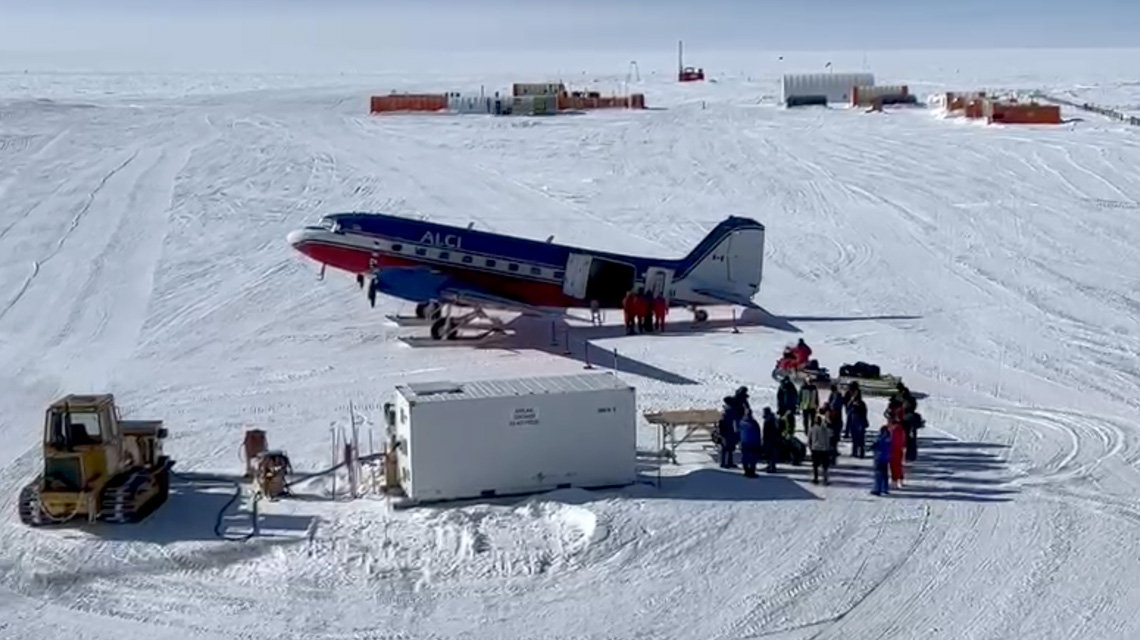Italian National Agency for New Technologies, Energy and Sustainable Economic Development

Antarctica: 12 researchers in complete isolation to study climate and biomedicine
The Zucchelli base closed but research activities continue at Concordia and aboard the Laura Bassi
The 19th winter campaign of the National Antarctic Research Program (PNRA), funded by the Ministry of University and Research and managed by ENEA for organization and logistics and by the Cnr for scientific coordination, kicks off. 12 selected winter residents will spend nine months in complete isolation: 5 Italians from the PNRA, 6 French from the Paul Emile Victor Polar Institute (IPEV) and 1 German physician from the European Space Agency (ESA). In fact, throughout the polar winter the station cannot be reached, due to the bone-chilling temperatures which can dip below minus 80 ° C. Studies on the climate, glaciology, physics and chemistry of the atmosphere and biomedicine will be conducted as well as various station maintenance activities.
The beginning of the winterover coincides every year with the shut down of the Mario Zucchelli station in Baia Terra Nova, which will reopen next October with the arrival of the new summer expedition crew. Over 50 research projects on atmospheric sciences, geology, paleoclimate, biology, oceanography and astronomy were conducted during the current campaign, despite the difficulties caused by reduced ice thickness. The data collected will then be processed and analyzed in laboratories of several italian research institutions and universities. 240 researchers and technicians participated in the expedition, including 23 military experts from the Army, Navy, Air Force, Carabinieri and Fire Brigade.
After the shut down of the Zucchelli base, research activities continue at and on board the Laura Bassi vessel, engaged in the second oceanographic campaign in the Ross Sea dedicated to geophysics and hydrographic surveys, in collaboration with the Hydrographic Institute of the Navy, and focusing on seabed mapping and the creation of charts to ensure navigational safety. The Italian icebreaker, owned by the National Institute of Oceanography and Experimental Geophysics (OGS), has recently set a world record by touching the southernmost point in the hemisphere ever reached by ship. The conditions of the sea, unusually free from ice, allowed the researchers to perform important analyses, profiling and scientific fishing activities. Its return to the port of Lyttelton in New Zealand is scheduled for early March, while the one to Italy in the second half of April.
In November, the 38th Expedition framed the first test landing of the C-130J of the 46th Air Brigade of the Air Force on the only airstrip on the Antarctic continent built on a moraine. The infrastructure, designed and built by ENEA and the Italian Air Force, will be in operation next year.
The 38th summer expedition also marked the conclusion of the second drilling campaign of the European project Beyond EPICA - Oldest Ice, an unprecedented challenge whose purpose is to go back in time by 1.5 million years to reconstruct past temperatures and greenhouse gas concentrations on Earth through the analysis of an ice core. During the campaign, the installation of the complex polar cap drilling system was completed, which made it possible to reach depths of over 800 metres. In Italy, the Ca' Foscari University and ENEA which, jointly with the IPEV, coordinate logistics activities, are in the project team coordinated by the CNR Institute of Polar Sciences.
"We are very satisfied with the outcome of the 38th expedition, which marked a series of successes for Italian research in Antarctica, despite unforeseen events and difficulties", said Elena Campana, head of the ENEA Antarctic Technical Unit. “The impossibility of landing near the Mario Zucchelli Station due to the reduced ice thickness, forced us to reschedule most of the activities, but at the same time speeded up the first landing on the semi-prepared runway, for which ENEA had been working for years together with the Air Force and the Fire Brigade. A runway destined to become an international hub in Antarctica at the service of scientific research".
